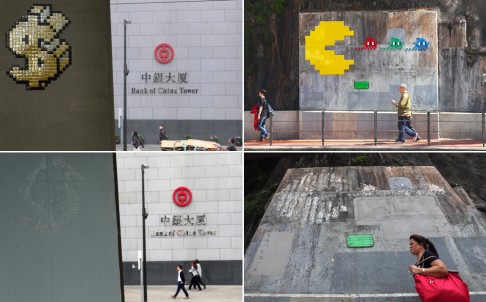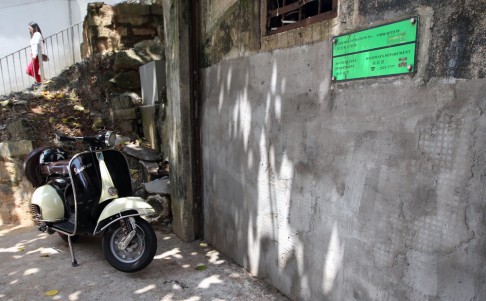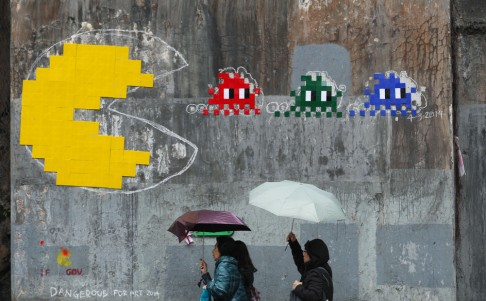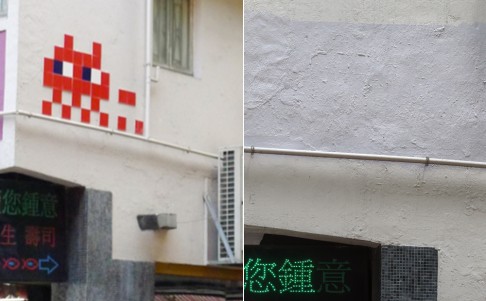Plug pulled on Pac-Man again
Artists say that although Frenchman's creations have been blotted out, his message of challenging the establishment is etched on city's memory
PUBLISHED : Friday, 11 April, 2014, 6:47pm
UPDATED : Saturday, 12 April, 2014, 6:32am
Vivienne Chow [email protected]

The French artist who is a regular at galleries around the world was prolific in his street art in Hong Kong, as seen in Central (top left) and Tin Hau (top right). But Invader has failed to win over the government, which has done its best to wipe it all out (bottom).
The resurrected Pac-Man has been gobbled up again. But the spirit of challenging the establishment - as intended by the artwork's original creator - lives on, the local arts community says.
With its latest removal from the same Tin Hau wall, the street art of tiles featuring characters from the iconic arcade game Pac-Man has fallen victim twice to the government's efforts to "keep the streets safe".
The authorities first moved in on the creation, by French street artist Invader, in February. Members of the public responded to artists' calls to fight back and put up a second version less than a month later - only to have their efforts defeated.

A concrete wall in Happy Valley returns to its sterile state, stripped of Invader's street art.
Invader's creations at many other sites, including a Hong Kong Phooey Dog in Happy Valley and another work near the Central ferry piers, were also no more, readers told the South China Morning Post.
"But the moment of the impact of these artworks and the public's restoration has touched the hearts of many," artist Kacey Wong, who was among the group calling for a "Space Invaders Restoration Scheme", said yesterday. "This moment lives on forever in the people of Hong Kong."
The Highways Department admitted the Pac-Man recreated at the beginning of last month was removed on Thursday.
The department was a works agency responsible for maintaining road safety, a spokesman said. "Any unauthorised materials or graffiti on public facilities are unlawful," he said.

The public version of the original Pac-Man mosaic by French Street Artist Invader at Fortress Hill, which has also been removed. Photo: Nora Tam
It would arrange for "immediate removal" if any such unlawful works were spotted or complained against, he added.
The French artist, famous for creations inspired by the 1978 arcade game Space Invaders, "artistically invaded" Hong Kong in January with 48 new works, including the mosaic pattern of ceramic tiles that formed the Pac-Man along King's Road.
It was taken down on the day before Valentine's Day, the department acknowledged, sparking a public outcry.
Invader said at the time that Hong Kong was the first city in the world to remove his street art - which graced more than 60 cities, on top of regular exhibits at museums and fine art galleries.
"I am very saddened and affected by these removal actions," the artist said then.

Before and after.
His words prompted a group of local artists, including Wong, to urge members of the public to inherit the spirit of the Frenchman and register their protest by restoring the works.
Wong believed the recreated Pac-Man was an outcome of their campaign, but also that the government actions were expected.
"Nothing can move a government that operates like a cold-hearted machine."
He said the nature of graffiti, like the street calligraphy of the late "King of Kowloon" Tsang Tsou-choi, was to challenge the establishment as it was created outside of the law and destined to be removed.
